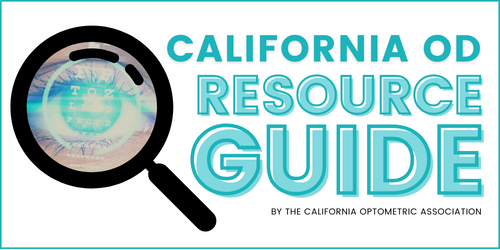Medical and Vision Plan Paneling: A Step-by-Step Guide
Gaining access to medical and vision plan panels can be confusing. If you are a new graduate who may be applying to be a plan provider for the first time, or a practicing doctor of optometry who wants a refresher, the COA Health Care Delivery Systems Committee (HCDS) has provided a step-by-step guide to help navigate you through this process.
- Obtain an NPI number.
In order to be a Medicare provider, a doctor of optometry must obtain a National Provider Identifier (NPI) number. Instructions for applying can be found at:
https://nppes.cms.hhs.gov/NPPES/StaticForward.do?forward=static.instructions
- Complete a Medicare application.
Most insurance plans that contract with doctors of optometry require a panel applicant to be a Medicare provider first. The Medicare application is a lengthy document. Medicare enrollment application forms are fillable on your computer. However, signatures must be handwritten. Upon acceptance of your Medicare application, a Provider Transaction Access Number (PTAN) will be issued. For further instructions, visit this website: http://www.cms.gov/Medicare/Provider-Enrollment-and-Certification/MedicareProviderSupEnroll/EnrollmentApplications.html
- Enroll to be a Medi-Cal provider.
Since most insurance plans have some form of a Medicaid (known as Medi-Cal in California) product, many will require the doctor of optometry to become a Medi-Cal provider first. Note: Just because you enroll as a provider does not mean you have to accept Medi-Cal in your practice. For an application and instructions, visit this website:
http://www.dhcs.ca.gov/provgovpart/Pages/OptometristApplicationPackage.aspx
- Obtain a DEA number.
While obtaining a Drug Enforcement Administration (DEA) number may not be required, it is definitely encouraged. Practicing at the highest possible level of licensure is important for gaining access to medical panels. DEA certification is required for prescribing controlled substances. Doctors of optometry in California are authorized to prescribe Schedule III (codeine combination products) and Schedule II (hydrocodone combination products) only. Thus, it is not required if you are not going to prescribe these types of drugs. However, medical panels are beginning to require DEA certification for admission.
To apply for a DEA number, you must complete form 224: https://www.deadiversion.usdoj.gov/webforms/jsp/regapps/common/newAppLogin.jsp.
- Apply to CAQH for credentialing
Credentialing is the administrative process for validating the qualifications of licensed professionals and assessing their background and legitimacy. CAQH is the credentialing agency that is used by many health plans. Visit the CAQH website to apply for credentialing:
http://www.caqh.org/access-upd.php
- Decide which plans you would like to be a provider for and apply!
There are many different plans to consider joining. Some of the questions you need to ask yourself before joining a panel are:
- How many patients are covered by this plan in my area? Identify the major plans in your geographic area. If the majority of the population in your practice location has a certain plan, it would make sense to become a provider. On the other hand, if there are virtually no patients covered by this plan in your area, question whether it would be worth your while to become a provider for that plan.
- What is the reimbursement rate? All panels try to make their reimbursement schedules appear as lucrative as possible. As a provider, educate yourself about:
- The reimbursement amounts for the examination and materials
- Costs for which you will be responsible
- Costs for which the panel will be responsible
- How easy is it to work with the plan? Remember, each plan is organized differently with its own procedures and claims processes. Some plans are definitely easier to work with than others. However, you may not find this out until after you become a member. Read application instructions thoroughly, and check additional and specific requirements for each plan to which you are applying.
Note: The above information is provided for informational purposes only. It is not intended to replace the professional advice of legal counsel.
Copyright © 2015 California Optometric Association. All rights reserved.
Page updated: 06/19/2019
1.png)

1.png)



.png)




.png)
.png)
.png)
.jpg)
.png)
.png)
.png)
.png)
.png)
.png)

.png)

.png)
.png)
